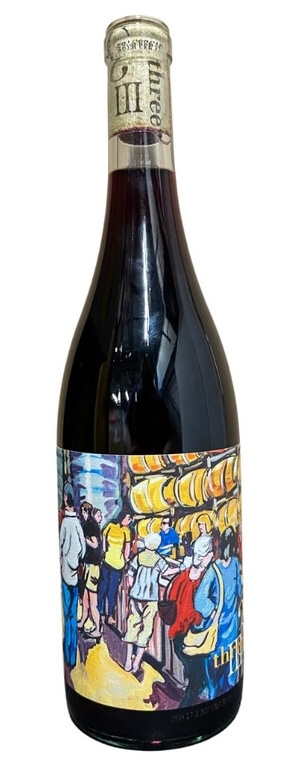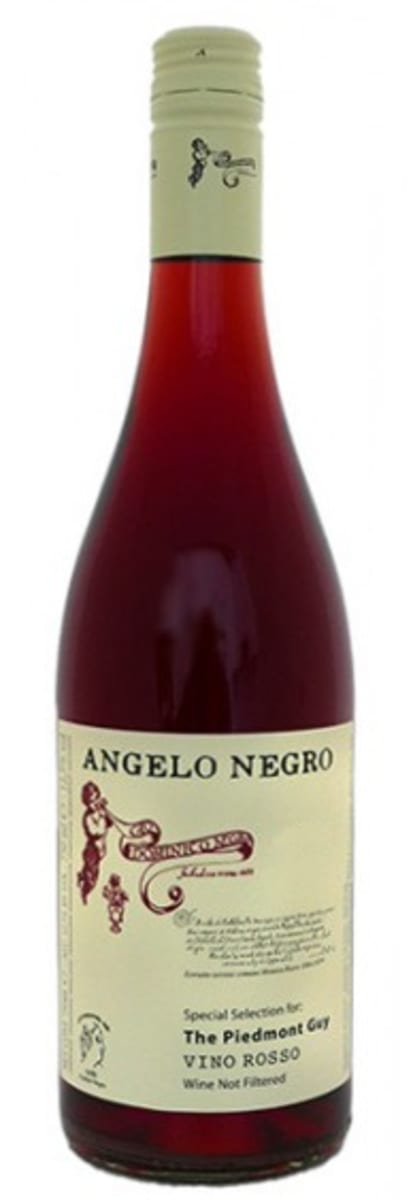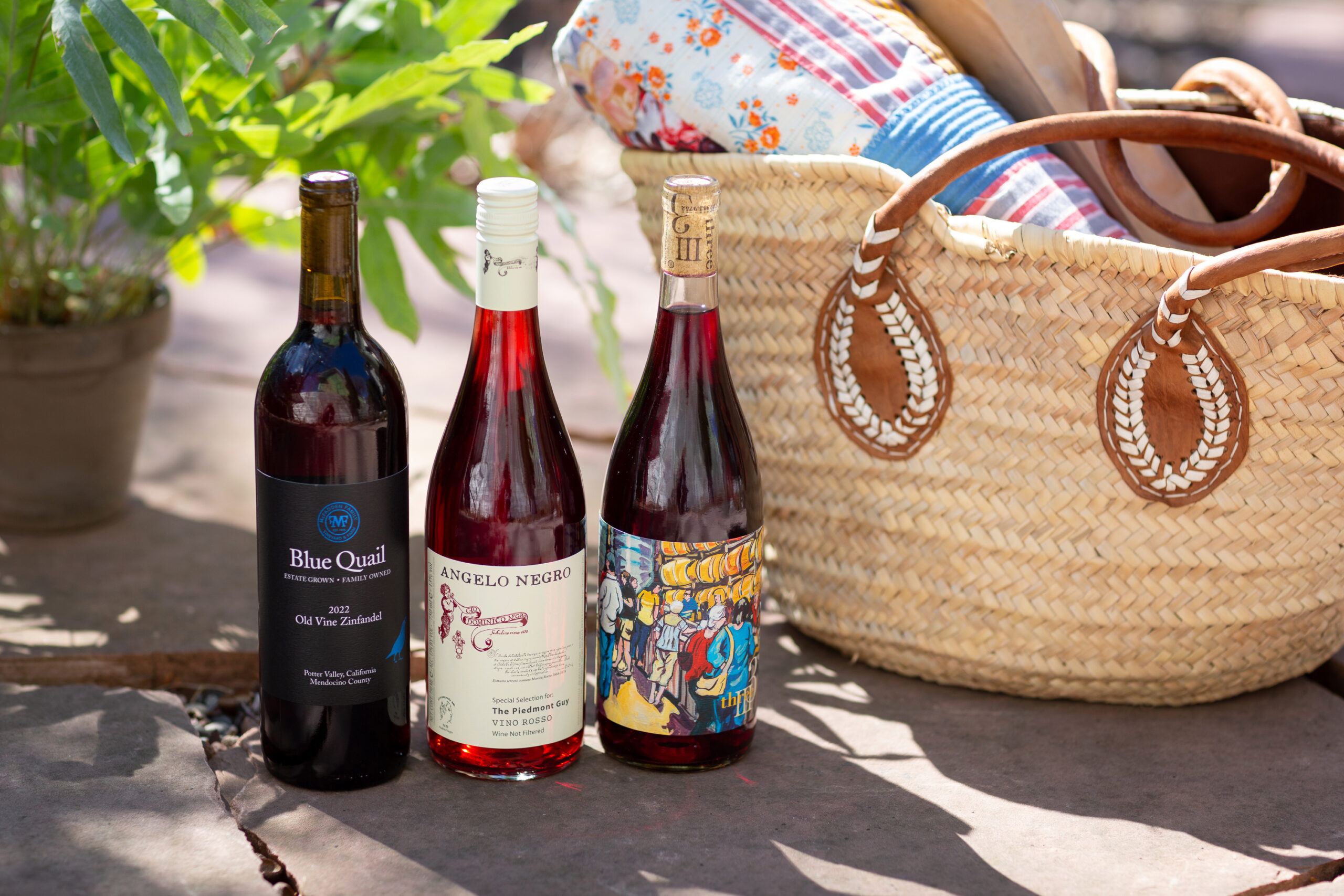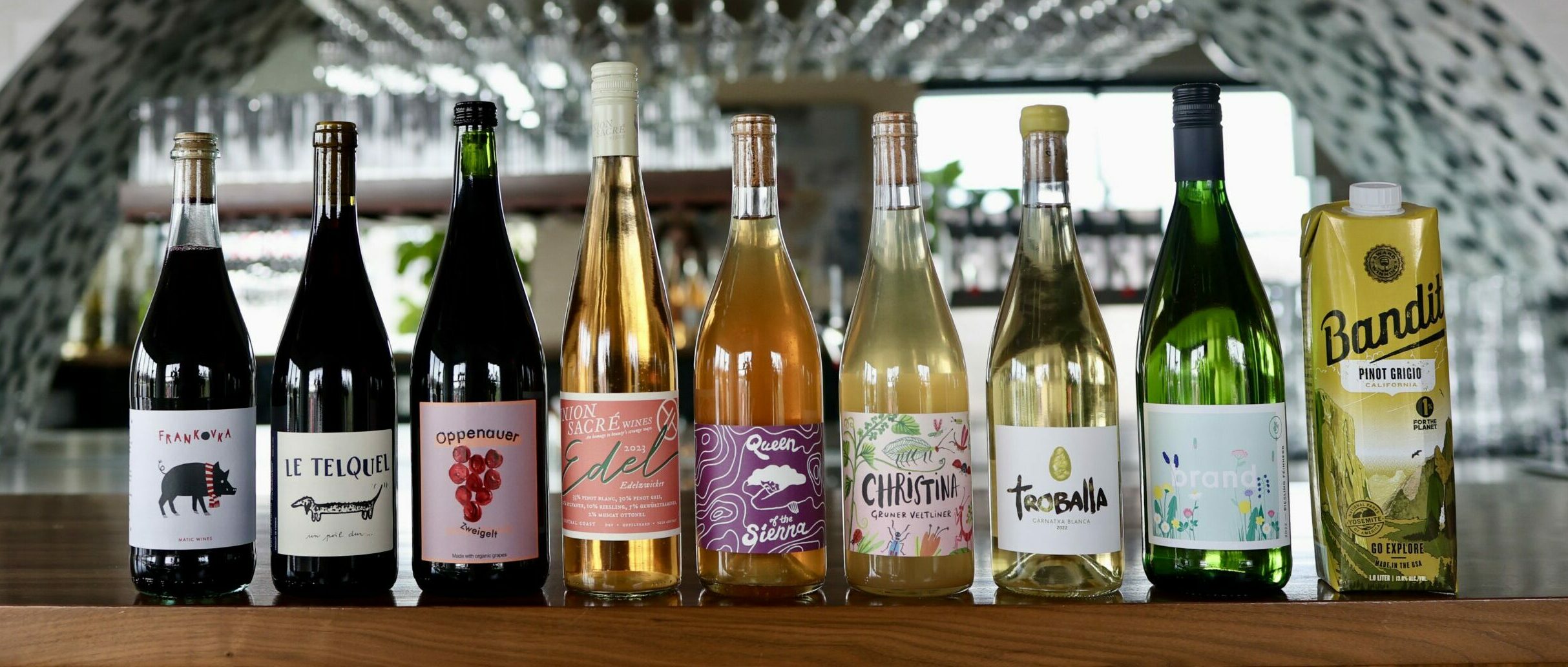
Jennifer Simonson
Jennifer is a writer, photographer and wine enthusiast who publishes a blog called Bookworm, in which she pairs wine with books. It combines two of her favorite pastimes and is intended to make both reading and sipping wine more enjoyable. She recently received her WSET Level 3 in Wines certification through France 44 Wine & Spirits Education. She lives in Linden Hills and enjoys running around the city lakes, gardening, cooking and making art.
It’s nearly summertime, which means I’m craving easy-drinking wines to enjoy at the lake, on a picnic, or with friends in the backyard. While you can’t go wrong with bright and fruity rosé, did you know that some red wines can be equally as refreshing? The key is to choose the right wine and to serve it chilled to intensify its freshness.
The great news is that “chillable” red wine need not be expensive. Red wines that are fruity, light- to medium-bodied, with low tannin and high acidity, are great candidates to be chilled. Consider Gamay, Cabernet Franc, Zweigelt, Dolcetto, Lambrusco, and some red blends.
I generally refrigerate chillable red wine for several hours, moving them to the countertop 30 minutes before I intend to serve. If the wine seems muted, it might be too cold, so give it some time to warm up in your glass. Feel free to experiment and see what temperature brings out the best aromas and flavors in your favorite wine. Light-bodied reds should be served at 55 F, whereas the range for ‘chillable’ reds is slightly cooler, around 50-55 F. (And you might be surprised to learn that the recommended serving temperature for medium- and full-bodied red wine is a somewhat cool “room temperature” of 59-64 F.)
Chillable reds are delicious on their own, but they’re also extremely food-friendly because of their fruity character and high acidity. There’s no need to be fussy with your pairings – it’s summertime after all! Think about meals that come together easily and incorporate fresh vegetables and grilled foods or picnic fare such as pasta salads, cheeses and charcuterie. One of my favorites pairings with a chillable red is the fennel salami sandwich and potato chips from the France 44 Cheese Shop.
The wines I recommend below are made with care, but they’re not wines for cellaring – these youthful wines are drinking beautifully right now! In this line up, the first wine has the most broad appeal, the second is for adventurous drinkers, and the third offers a surprising twist on a familiar grape.
 This juicy wine strikes the perfect summertime balance between ripe and tart fruit. On the nose find red cherry, red raspberry, blackberry, cranberry, red currant, plus a touch of baking spice. With light body, high acidity and low tannin, this wine can be paired with just about anything. Buy a case for your next patio party on a hot summer day – everyone will be happy!
This juicy wine strikes the perfect summertime balance between ripe and tart fruit. On the nose find red cherry, red raspberry, blackberry, cranberry, red currant, plus a touch of baking spice. With light body, high acidity and low tannin, this wine can be paired with just about anything. Buy a case for your next patio party on a hot summer day – everyone will be happy!
The wine is a blend of 59% Carignan, 33% Zinfandel, 6% Petit Syrah, and 2% Mataro.
Three Wine Co. is a family-run, sustainable winery. Winemaker Matt Cline and his wife Erin, who runs the tasting room, work primarily with California’s historic, pre-prohibition varietals, including Zinfandel, Mataro, and Carignan. Cline utilizes blending in his winemaking to find “a perfect balance between the grapes.”
 In the carefree spirit of summertime, this expressive red wine made from 100% Brachetto is a sensory adventure. It’s fermented with indigenous yeast in stainless steel and then aged for 5+ months on the lees of Arneis, a white grape variety native to Piedmont. It’s unfiltered and might appear a bit hazy.
In the carefree spirit of summertime, this expressive red wine made from 100% Brachetto is a sensory adventure. It’s fermented with indigenous yeast in stainless steel and then aged for 5+ months on the lees of Arneis, a white grape variety native to Piedmont. It’s unfiltered and might appear a bit hazy.
Pronounced floral and fruity aromas jump from the glass – think rose petal, hibiscus, violet, fresh strawberry, raspberry, sour cherry, red fruit punch and orange peel. The acid is refreshingly high, but this wine has a bit more body and texture than the ‘Faux Pas,’ as well as an enjoyably, long finish.
Serve this wine to impress your most curious friends. It’s aromatic, intriguing and complex, but remains easy drinking. It’s a wine you’ll reach for all summer long, and I think it pairs perfectly with wood-fired pizza. Recommended serving temperature is 50-59 F.
The Negro estate, which dates to 1670, practices organic viticulture in the Roero subregion of Piedmont. Winemaker Angelo Negro works exclusively with the region’s native grapes, including Arneis, and Nebbiolo.
 Most of us are familiar with full-bodied, rich and jammy California Zinfandel. But what happens to the wine when those Zinfandel grapes are grown in a cooler climate? The wine becomes almost “Beaujolais-esque,” like this one from Blue Quail exhibiting a lighter body, elevated acidity and medium alcohol at 13%.
Most of us are familiar with full-bodied, rich and jammy California Zinfandel. But what happens to the wine when those Zinfandel grapes are grown in a cooler climate? The wine becomes almost “Beaujolais-esque,” like this one from Blue Quail exhibiting a lighter body, elevated acidity and medium alcohol at 13%.
The climate in Mendocino County’s Potter Valley AVA is cool with high diurnal range. Grapes ripen slowly during warm days, but cool nights preserve their acidity. They can hang on the vine longer under these conditions and develop a full flavor.
The fruity character of this dry wine is more candied than the previous two, but that sweetness is balanced with freshness. On the nose and palate, look for cherry vanilla cola, strawberry jam, cranberry, blackberry, and a bit of black peppercorn and earth. Of the three wines, this one can withstand the heartiest food pairing.
The McFadden Family planted these Zinfandel vines in 1971, and they’re some of the oldest in Potter Valley. The organic grapes are whole cluster pressed and fermented in oak.

